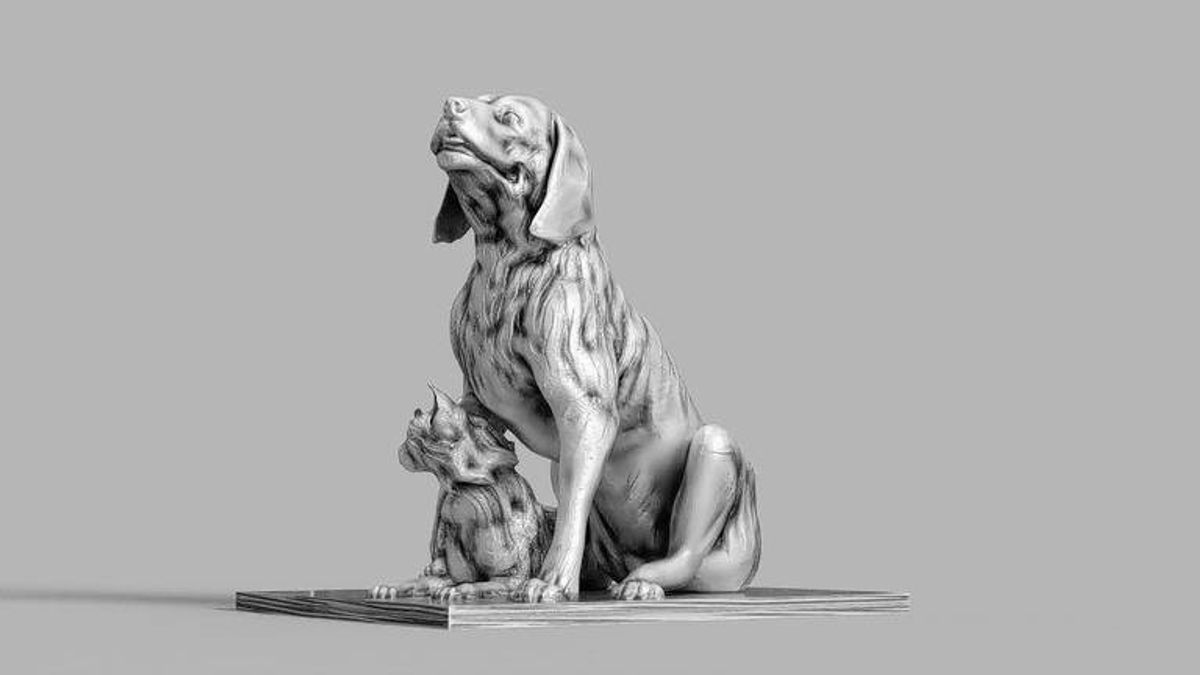You might be a cat person or a dog lover—or neither if they are forced on you as large-scale sculptures. That is the case in Miami at least, where trouble is brewing between the local art world and a city commissioner over the politician’s plans to permanently install a garish pack of 50 aluminium animal statues in Maurice A. Ferré Park, near the Pérez Art Museum Miami. “A lot of people were blindsided by this, just like we were,” says the museum’s director Franklin Sirmans, who plans to make his opinion known at a public hearing on Tuesday, along with other members of the cultural community. “There's so many other things that might take precedence in this moment, rather than an $896,000 project to design and cast these animal statutes.”
The lack of notice about the proposed sculpture garden, or bids for alternative artist-designed projects, led one board member to resign from the Bayfront Park Management Trust, which oversees the site and earlier this month voted to approve a contract to the local foundry Art and Sculpture Unlimited, Inc to design and cast the works. “This item had not been included in our agenda and zero information on this proposal had yet been made available to any board member,” writes Cristina Palomo, who lives across the street from the park, in her publicly posted resignation letter this week. “I am very disappointed and taken aback at the process and the way that this was hastily rushed through without a real chance to seek public input and perform our due diligence.”
The project, spearheaded by Miami Commissioner Joe Carollo and wife, would cost $896,000 or nearly half the annual budget the Bayfront Park Management Trust receives from the Omni Community Redevelopment Agency. Carollo, who is the trust’s chairman, told the Miami Herald that he got the idea for the installation when a friend sent his wife a video of a park in Cali, Colombia filled with cat sculptures that has become a tourist attraction. “Mark my words, these sculptures will bring busloads of tourists to the park,” Carollo says. “I envision people flocking to see this art. Miami will be known for its ‘Walkway of Dogs and Cats.’”
But many in Miami do not want such a reputation. “If you think on a historical level about public art in Miami, you think about the Claus Oldenburg orange peels sculpture, the Ed Ruscha Miami Dade Public Library installation of some 60-odd paintings that are just phenomenal. We have such a vibrant history of art in public places, it's almost bigger than all of us,” Sirmans says. “It goes to the heart of all of the great things that have happened here over many, many years in terms of building up the profile of Miami and its relationship to Modern and contemporary art.”
Sirmans adds that before the coronavirus pandemic, there were plans being discussed “for a real sculpture park that could be something we all look to with pride,” along the lines of Olympic Park in Seattle or the Minneapolis Sculpture Garden outside the Walker Art Centre. “Those are the kinds of things we're thinking about, and we know those things take time and resources. But that’s worth it, especially in a place like Miami that is growing with the rapid momentum that it has,” Sirmans says. “We deserve a considered and world-class public sculpture park.”
Other major figures in the Miami art world, including collectors Rosa de la Cruz and Jorge Pérez, and Design Miami founder Craig Robins, have also reportedly voiced their opposition to Carollo’s collection of cats and dogs. The Bayfront Park Management Trust is due to hold a public hearing on the project on the site on Tuesday, and Sirmans says he and others plan to attend.
“Nothing should happen by the hand of one person, everything is about conversation and making sure that there's some degree of consensus around what people really want,” Sirmans adds. Other amenities locals have sought at the site include a dog park and a children’s playground. “We want to have conversations with the people who live across the street and with the dog walkers and with the people who like to lay out in the sun. That’s what makes the park a real centre of community.”


